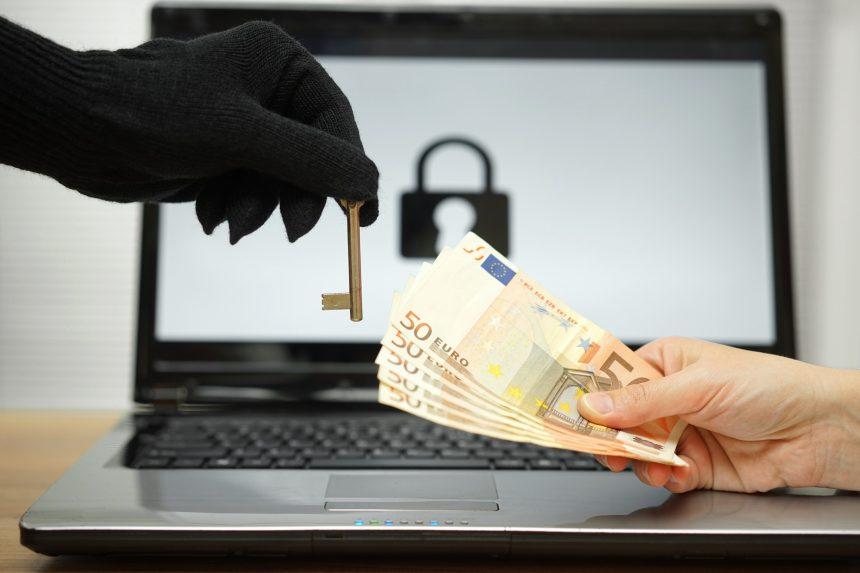Ransomware attacks remain one of the most pervasive and damaging threats. Among the latest iterations is Nett ransomware, a malicious software that encrypts victims’ data and demands a ransom for its release. This article delves into the specifics of Nett ransomware, its actions, consequences, detection, similar threats, and provides a comprehensive guide on its removal and future prevention strategies.
Actions and Consequences of Nett Ransomware
Nett ransomware operates by infiltrating a victim’s computer and encrypting their files, rendering them inaccessible. The ransomware typically spreads through phishing emails, malicious downloads, or exploit kits that take advantage of system vulnerabilities. Once installed, Nett ransomware performs the following actions:
- File Encryption: It encrypts various files on the infected system using strong encryption algorithms, appending a specific extension to each encrypted file.
- Ransom Note: After encryption, the ransomware drops a ransom note, usually in a text file, informing the victim of the attack and providing instructions on how to pay the ransom to decrypt the files.
- Data Exfiltration: In some cases, the ransomware might also exfiltrate data before encryption, using it as leverage to ensure payment by threatening to release sensitive information publicly.
The consequences of Nett ransomware are severe. Victims can lose access to critical data, leading to significant operational disruptions, financial losses, and potential reputational damage. Paying the ransom does not guarantee file recovery and can encourage further criminal activity.
Text presented in the ransom message:
YOUR PERSONAL ID:–/!\ YOUR COMPANY NETWORK HAS BEEN PENETRATED /!\ALL YOUR IMPORTANT FILES HAVE BEEN ENCRYPTED!
YOUR FILES ARE SAFE! JUST MODIFIED ONLY. (RSA+AES)
ANY ATTEMPT TO RESTORE YOUR FILES WITH THIRD-PARTY SOFTWAREWILL PERMENANTLY DESTROY YOUR FILE.DO NOT MODIFY ENCRYPTED FILES. DO NOT RENAME ENCRYPTED FILES.
NO SOFTWARE AVAILABLE ON INTERNET CAN HELP YOU. WE ONLY HAVESOLUTION TO YOUR PROBLEM.
WE GATHERED HIGHLY CONFIDENTIAL/PERSORNAL DATA. THESE DATAARE CURRENTLY STORED ON A PRIVATE SERVER. THIS SERVER WILL BEIMMEDIATELY DESTROYED AFTER YOUR PAYMENT. WE ONLY SEEK MONEYAND DO NOT WANT TO DAMAGE YOUR REPUTATION. IF YOU DECIDE TONOT PAY, WE WILL RELEASE THIS DATA TO PUBLIC OR RE-SELLER.
YOU WILL CAN SEND US 2-3 NON-IMPORTANT FILES AND WE WILLDECRYPT IT FOR FREE TO PROVE WE ARE ABLE TO GIVE YOUR FILESBACK.
Contact us for price and get decryption software.–* Note that this server is available via Tor browser only
Follow the instructions to open the link:1. Type the addres “hxxps://www.torproject.org” in your Internet browser. It opens the Tor site.2. Press “Download Tor”, then press “Download Tor Browser Bundle”, install and run it.3. Now you have Tor browser. In the Tor Browser open “{{URL}}”.4. Start a chat and follow the further instructions.
If you can’t use the above link, use the email:dec_helper@dremno.comdec_helper@excic.com
MAKE CONTACT AS SOON AS POSSIBLE. YOUR DECRYPTION KEY IS ONLY STOREDTEMPORARLY. IF YOU DON’T CONTACT US WITHIN 72 HOURS, PRICE WILL BE HIGHER.
Detection Names and Similar Threats
Nett ransomware can be detected by various names depending on the cybersecurity vendor. Some common detection names include:
- Trojan-Ransom.Win32.Nett
- Ransom.Nett
- W32/Nett
Similar ransomware threats that share characteristics with Nett ransomware include:
- Ryuk Ransomware: Known for targeting large organizations and demanding high ransom amounts.
- Sodinokibi (REvil) Ransomware: A highly sophisticated ransomware that also exfiltrates data before encryption.
- Maze Ransomware: Famous for its data exfiltration tactics and public shaming of victims who do not pay the ransom.
Comprehensive Removal Guide for Nett Ransomware
Removing Nett ransomware requires a methodical approach to ensure complete eradication and to recover encrypted files. Follow these steps:
Step 1: Isolate the Infected System
- Disconnect from Network: Immediately disconnect the infected system from the internet and any local networks to prevent the ransomware from spreading.
- Shutdown and Boot into Safe Mode: Shut down the system and restart it in Safe Mode to limit the ransomware’s ability to function.
Step 2: Identify and Terminate Malicious Processes
- Use Task Manager: Open Task Manager (Ctrl+Shift+Esc) and look for suspicious processes related to Nett ransomware. Terminate these processes.
Step 3: Remove Malicious Files
- Locate Ransomware Files: Search for recently added files that might be associated with the ransomware. Common locations include the Temp folder, Downloads folder, and the root directories.
- Delete Malicious Files: Delete the identified ransomware files. Be cautious not to remove critical system files.
Step 4: Decrypt Files
- Backup Encrypted Files: Before attempting decryption, make a backup of the encrypted files in case something goes wrong during the decryption process.
- Use Decryption Tools: If a decryption tool is available for Nett ransomware, use it to decrypt the files. These tools are often released by cybersecurity firms once they crack the ransomware’s encryption algorithm.
Step 5: Restore from Backup
- Restoration: If decryption is not possible, restore files from a recent backup. Ensure the backup is clean and free from infection.
Best Practices for Preventing Future Infections
Preventing ransomware infections requires a combination of good practices and proactive measures:
- Regular Backups: Maintain regular backups of critical data. Store backups offline or in a secure cloud environment.
- Security Software: Use robust antivirus and anti-malware software. Keep the software up to date to protect against the latest threats.
- System Updates: Regularly update operating systems, software, and firmware to patch vulnerabilities that could be exploited by ransomware.
- Email Security: Be cautious with email attachments and links. Verify the sender’s authenticity before opening attachments or clicking on links.
- Network Security: Implement strong firewall and network security measures to prevent unauthorized access. Use VPNs for secure remote access.
- User Training: Educate employees and users about cybersecurity best practices and the dangers of phishing and social engineering attacks.
By following the removal guide and implementing best practices for cybersecurity, individuals and organizations can protect themselves against Nett ransomware and other similar threats, ensuring the safety and integrity of their data.





